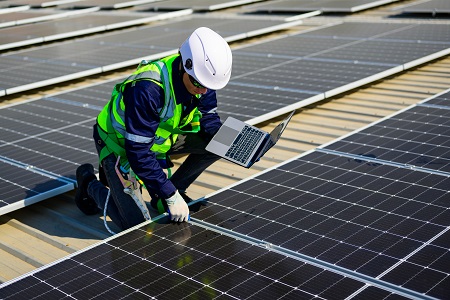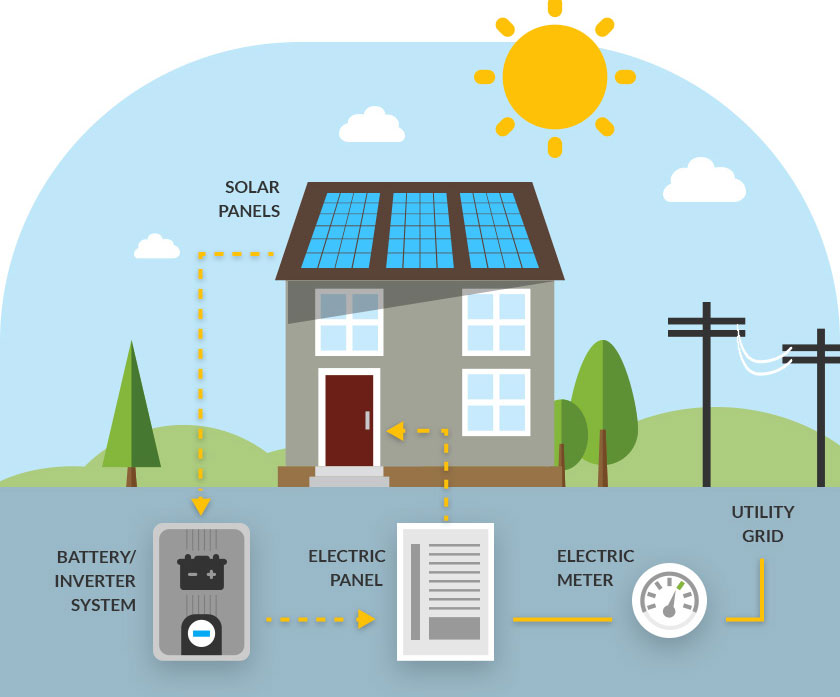Solar System Contractor Virginia: Lumina Solar Focuses On Supplying Advanced Photovoltaic Solutions For Houses And Organizations
History and Establishing
Have you ever wondered how a photovoltaic panel business springs from a mere trigger of motivation into a powerhouse of sustainable energy? It often begins with a vision-- one fueled by a mix of innovation, decision, and a pinch of serendipity. The journey of lots of solar business mirrors the evolution of the innovation itself: from large, inefficient panels to streamlined, high-efficiency marvels utilizing the sun's bounty.
The Early Days
In the late 20th century, when solar energy was still a niche principle, pioneers planted seeds for what would end up being an international movement. Think of a little workshop filled with curious engineers, relentlessly experimenting with solar batteries. Their enthusiasm was palpable, often driven by a desire to fight climate change and reduce reliance on fossil fuels.
One such anecdote is about a creator who, inspired by a camping trip, realized that even in remote locations, the sun could power vital gadgets. This simple observation stimulated a business's mission to equalize access to tidy energy.
Founding Concepts

- Innovation: Continually pressing the borders of solar technology to improve effectiveness and toughness.
- Sustainability: Devoting to eco-friendly manufacturing and reducing carbon footprints.
- Availability: Making renewable resource solutions affordable and practical for daily users.
Milestones in Growth
| Year | Key Occasion |
|---|---|
| 1985 | Business established in a little garage, focusing on research study and advancement. |
| 1995 | First business photovoltaic panel item released, getting regional attention. |
| 2005 | Broadened to international markets, embracing worldwide renewable energy goals. |
| 2015 | Presented cutting-edge photovoltaic panel innovation with enhanced energy conversion. |
Isn't it fascinating how these incremental steps, typically neglected, shape the energy landscape today? The photovoltaic panel company story is not just about innovation; it's about a relentless mission for a brighter, cleaner future.

Innovations in Solar Panel Technologies
Ever seen how some photovoltaic panels gleam brighter and last longer? It's not magic; it's the science of photovoltaic effectiveness. Modern photovoltaic panel business invest heavily in technologies like bifacial cells, which capture sunlight from both sides, increasing energy harvest without expanding roofing system space. Have you ever wondered why some panels perform better on cloudy days? That is because of advances in thin-film solar technology, which flourishes under diffused light conditions.
Product Variations Tailored to Special Requirements
One size never ever fits all. Solar panel service providers now offer:
- Monocrystalline panels for maximum performance and streamlined aesthetics, perfect for space-constrained rooftops.
- Polycrystalline panels, which offer an economical option without compromising too much output.
- Building-integrated photovoltaics (BIPV), combining solar tech perfectly into architectural elements like windows and facades.
Selecting the best item isn't simply about in advance expense; it has to do with matching your environment, energy objectives, and long-lasting savings. Homes shaded by trees require panels that stand out in low-light scenarios, something lots of overlook till energy bills climb suddenly.
Technical Tips for Optimal Selection
- Examine the temperature level coefficient-- lower values mean panels lose less effectiveness on hot days.
- Try to find panels with boosted anti-reflective finishings to optimize light absorption.
- Think about the panel's service warranty not simply for problems, but for ensured power output over years.
- Don't undervalue the value of the inverter innovation coupled with the panels; it can make or break your system's performance.
Beyond Panels: Emerging Patterns
Think of photovoltaic panels that change their angle instantly to go after the sun-- tracking systems are ending up being more accessible, increasing yield substantially. Or solar tiles that mix undetectably into your roofline, changing your home into a quiet, self-sufficient power generator. These developments are reshaping what a photovoltaic panel business offers-- not simply products, however incorporated energy options.
Market Presence and Global Operations
Ever wonder why some photovoltaic panel companies seem to grow up in every corner of the globe while others barely make a ripple? The difference lies not just in innovation however in mastering the art of browsing diverse markets. Broadening globally resembles planting seeds in different climates-- you must comprehend each environment's special conditions to flourish.
Take, for instance, the detailed dance of logistics and supply chain management. Delivering panels halfway throughout the world isn't practically distance; it has to do with timing, customs, tariffs, and adapting to local need changes. A company with robust global operations anticipates these variables, making click here sure panels arrive on schedule without inflating expenses. This insight is no small feat and frequently separates industry leaders from fans.
Secret Strategies for Expanding Market Presence
- Localized manufacturing: Establishing production centers near target markets minimizes shipping hold-ups and import complexities.
- Strategic collaborations: Working together with local firms accelerates market penetration and constructs trust.
- Adaptive item design: Tailoring photovoltaic panel tech to weather, sun strength, and facilities nuances improves performance and approval.
What about the human aspect? Photovoltaic panel business operating globally must fix up cultural distinctions and regulatory subtleties without forgeting their core objective. What works in a sun-drenched desert might falter in a humid seaside area. Often, the most ingenious solution is simply listening-- taking in regional insights to improve innovation and approach.
Professionals frequently encourage a phased rollout instead of a shotgun expansion. Why risk overextension when measured growth develops sustainable momentum? Scaling carefully indicates balancing aspiration with functional durability - Commercial Solar Panels Virginia. After all, in the race for sustainable energy dominance, persistence can be as valuable as speed
Environmental Effect and Sustainability Practices
When photovoltaic panels first emerged, numerous assumed they brought no ecological luggage. The reality is more nuanced. The production of photovoltaic cells involves unusual earth metals and energy-intensive procedures, which can leave a substantial carbon footprint before the panels even reach rooftops. Yet, the true environmental expense depends heavily on the sustainability practices utilized by the solar panel business throughout the lifecycle of their items.
How typically do we stop briefly to consider what occurs to photovoltaic panels at the end of their beneficial life? Unlike batteries or electronics, solar panels can last 25-30 years, however disposal and recycling pathways stay underdeveloped in numerous areas. A company committed to reducing environmental damage will have a robust plan for recycling photovoltaic materials, restoring important silicon, glass, and metals to prevent land fill accumulation.
Key Sustainability Techniques
- Utilizing low-impact manufacturing strategies that lessen water and energy consumption.
- Implementing closed-loop systems to recycle production waste back into new panels.
- Participating in transparent supply chain audits to ensure ethical sourcing of basic materials.
- Designing panels for easier disassembly to help future recycling efforts.
It deserves noting that some solar business have actually pioneered ingenious techniques, such as integrating eco-friendly elements or using less hazardous chemicals during fabrication. This not only reduces environmental strain but likewise sets a precedent for the industry. The question remains: can the solar market genuinely pivot towards a circular economy model without compromising effectiveness or price?
Expert Tips for Examining Sustainability
- Inquire about the business's commitment to carbon-neutral manufacturing and whether they balance out emissions.
- Examine if they partner with accredited recycling facilities dedicated to solar panel waste.
- Look for transparency reports detailing environmental impacts and sustainability goals.
- Consider the durability and warranty of panels as an indirect step of resource efficiency.
In the end, selecting solar energy ought to imply more than simply slashing electrical power bills; it's about supporting a future where energy is gathered properly and waste is thoughtfully handled. Photovoltaic panel business that welcome this philosophy not just light up homes however likewise cast a brighter light on sustainable development.